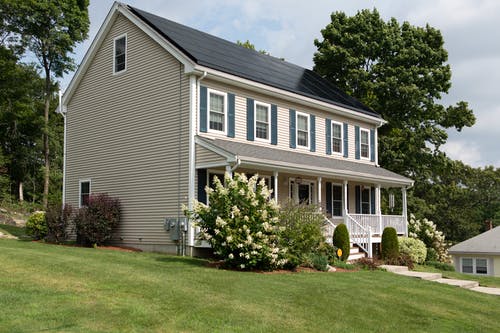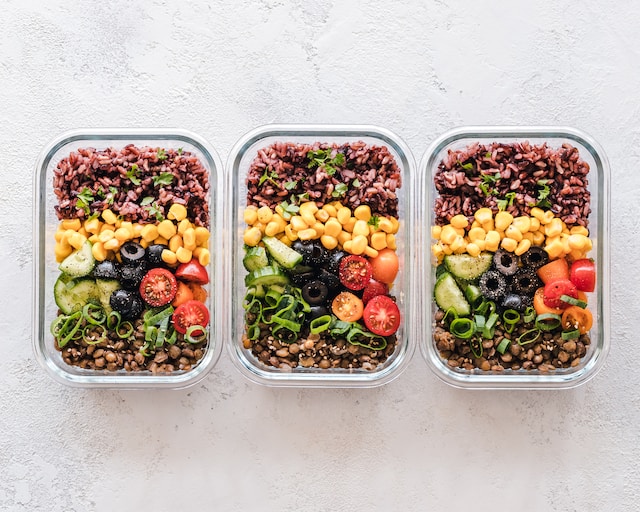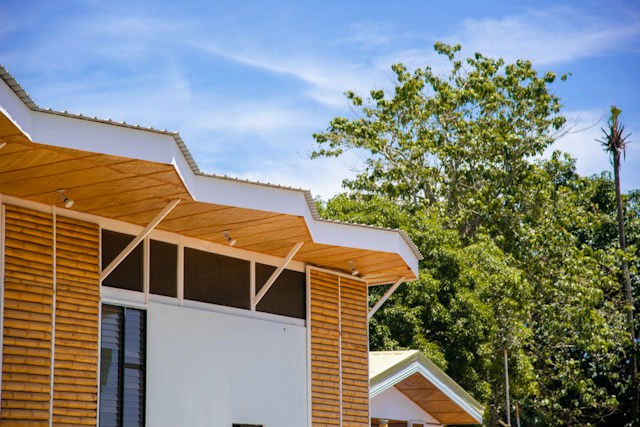When you are trying to make your home more environmentally friendly, you are helping to improve the environment. Home sustainability should reduce the cost of running your home by conserving energy, water, system, and appliance maintenance. You also make a better environment for yourself, your family, and your pets.
We gathered some experts that helped us creating this article that will answer some of those questions that we normally have when trying to take more sustainable practices at home.
How to choose the most sustainable materials when building a home
When you decide to build an eco-friendly, sustainable home, start out with a detailed plan that will create guidelines to keep your budget on track, allowing you to make “best practice” selections for your building materials.
An architect or designer experienced in green building practices will make sure that your plans work hand-in-hand with local sustainable resources and should be able to provide a list of distributors that sell these products.
Your involvement in the process of material selection should start by verifying product data sheets for material composition, air, and vapor permeability, as well as application and installation instructions that show conformation to guidelines established by LEED and other green building organizations. For wood products, make sure they are certified by the FSC (Forest Stewardship Council) to ensure that sustainable forest harvesting practices are being maintained.
Building your home with sustainable materials requires a substantial time investment but it will help keep the forests productive, the air clean, and contribute to a healthy environment for everyone.
– Matt Lee from Innovative Building Materials
How to go green in construction
Building Green means committing to the 5 pillars of Green. Energy | Health | Materials | Water | Place.
To measure this and know you are on track, you need 3rd party green building certification. This includes but is not limited to the LEED for Homes, GreenStar Homes Certification, NGBS Green Certification, or the Passive House program.
Each of these programs is a tool in your tool belt to guide you on ensuring your project is not just energy-efficient but also meetings the other important areas of green, especially having a healthier home.
Use their resources through design, construction, and even into how to operate your home.
– Brett Little from Green Home Institute
How to start being sustainable at home
Being sustainable at home means different things for everyone. The most important first step is to figure out what your goals are. Do you want to lower your footprint? Do you want to improve indoor air quality? Do you want to reduce toxins to support a healthy family? Getting clear on your WHY and then being strategic about the steps you can take to reach your goals will help you stay focused on what matters most to you, and avoid the overwhelm of trying to do too much. If creating a healthier home is part of your why, I’ve got resources and tools to help you! Visit greenathome.ca for free downloads, articles, podcasts, and more.
– Emma Rohmann, environmental engineer, mom of 2, and founder of Green at Home
How can technology make it easier for people to live more sustainably?
Technology promotes sustainable living by enhancing efficiency, reducing waste, and encouraging eco-friendly practices.
Smart home devices, such as programmable thermostats and energy-efficient appliances, help homeowners monitor and manage their energy consumption. For instance, smart thermostats can learn user habits and optimize heating and cooling, significantly reducing energy usage.
Advancements in solar and wind technologies have increased access to renewable energy sources. Solar panels and home batteries enable homeowners to generate and store their electricity, decreasing reliance on fossil fuels and lowering utility bills.
Apps have emerged as powerful tools for promoting sustainable living by providing users with accessible information and actionable strategies to reduce their environmental impact. From tracking carbon footprints to suggesting eco-friendly products, these applications empower individuals to make informed choices in their daily lives. You can find apps that facilitate food sharing, allowing users to give away surplus food items, thus minimizing waste. If you are a passionate individual who wants to make an impact, you can check Dots.eco’s monthly subscription — “Flow”. Through their membership, you’ll be making a monthly impact where needed the most, all from the comfort of your couch.
The use of technologies in daily life can help reduce your environmental footprint. Embracing these tools contributes to a more sustainable future.
Dots.eco
Tips to make a home more eco-friendly
Making your home more eco-friendly doesn’t have to be complicated, and it can be split into two sections to make it easier: changing your home itself or changing your habits within your home. Changing your house to be more eco-friendly might have higher upfront costs but will save you money in the long term. This includes switching to energy-efficient bulbs, installing a smart meter, and insulating your house, including double-glazing windows to make your home more energy-efficient overall. On the other hand, changing habits can mean washing clothes in cold water, using natural detergents, and using the dishwasher to waste less water. Overall, your aim is to reduce harmful impacts on the environment. My advice is to start small, and as you start learning more about sustainability, apply it to your home.
– Sofia Hadjiosif from Terra Movement
How to be sustainable in the kitchen
Sustainability in the kitchen benefits the environment, your health, and your wallet. Here are effective ways that can help to be sustainable:
- Reduce food waste:
– To avoid purchasing unwanted food items, first make a shopping list of everything you need, then go shopping.
– Avoid buying groceries from big food centers and malls instead, support local farmers and reduce carbon emissions associated with transportation by choosing locally sourced food.
– Compost food scraps to divert them from landfills and create nutrient-rich soil for your garden. - Ditch single-use plastics: Paper bags, glass jars, stainless steel containers, and other reusable or biodegradable substitutes can be used in place of single-use plastic items.
- Homemade cleaning products: Start creating environmentally friendly cleaning products to reduce the exposure to harmful chemicals and minimize water pollution. You can also make your cleaning solutions using natural ingredients like vinegar, lemon juice, and baking soda.
- Conserve water: Fix any leakage in faucets and pipes to prevent water wastage. Wash fruits and vegetables in a bowl instead of running water continuously. Also, you can install a rainforest harvesting system and use that water in kitchens.
– Abhay Gupta from Just Eco
Energy

How to save energy at home
Sometimes our homes need to have some improvements that could help our energy bills go lower and also take some small personal steps towards realizing a clean(er) energy household. Some of these changes that I’ve personally tried are changing all the light bulbs at home for fluorescent lights or LED’s, adding insulation from recycled fabrics, getting bigger indoor drying racks so that we don’t use the dryer when it’s not needed, and also, replacing the oldest and leakiest windows in the house.
So, there are small changes that don’t need too much investment that you can start making at your own place to see how your energy bills go lower while you are helping the environment.
– Jennifer S. Rennicks, Senior Director of Policy & Communications from Southern Alliance for Clean Energy
Can an energy audit help energy conservation?
A home energy audit or assessment helps you understand how your home uses energy. By using a blower door and an infrared camera, an energy technician can see exactly where your home is losing energy and can help you plan for home upgrades to stop energy loss! Make an energy audit the first step in your energy conservation journey so that you have an informed plan to maximize your energy savings.
– Emma Baumgart from from Elevate
What are the different types of solar panels in the market? Which are their benefits and disadvantages?
- Monocrystalline Solar Panels
Also known as single-crystal panels, these are made from a single pure silicon crystal that is cut into several wafers and can be easily identified by their dark black color. The use of pure silicon also makes monocrystalline panels the most space-efficient and longest-lasting among solar panel types. This comes at a cost, though: a lot of silicon is wasted to produce one monocrystalline cell, sometimes reaching over 50%, which can result in a higher price. Efficiency rating: over 20%
- Polycrystalline Solar Panels
As the name implies, these come from different silicon crystals instead of one. The silicon fragments are melted and poured into a square mold, which makes them much more affordable since there is hardly any waste, and also gives them that characteristic square shape. This also makes them less efficient in terms of energy conversion and space, since their silicon purity and construction are lower than monocrystalline panels. They also have lower heat tolerance, which means they are less efficient in high-temperature environments. Efficiency rating: 15-17% on average
- Passivated Emitter and Rear Cell (PERC) panels
These solar panels are an improvement over the traditional monocrystalline cell. This relatively new technology adds a passivation layer in the rear surface of the cell that enhances efficiency in several ways, including they reflect light back into the cell, increasing the amount of solar radiation that gets absorbed; they reduce the natural tendency of electrons to recombine and inhibit the flow of electrons in the system, and they allow greater wavelengths of light to be reflected. Efficiency rating: About 5% more efficient than monocrystalline panels
- Thin-Film Solar Panels
Thin-film panels are characterized by very fine layers that are thin enough to be flexible. Each panel doesn’t require a frame backing, making them lighter and easier to install. Unlike crystalline silicon panels that come in standardized sizes, thin-film panels can come in different sizes to suit specific needs. However, they’re less efficient than typical silicon solar panels. Efficiency rating: Up to 13-15% depending on the type. – Jonathan Franke from Aurora Solar How to start an orchard at home no matter space Growing fruit trees in a small backyard allows for a hyper-local harvest! When choosing fruit trees for a small space, opt for dwarf or super-dwarf trees. Super dwarf trees are compact enough to grow in large planting containers like a half-barrel; dwarf trees get somewhat bigger. Use an espalier technique to train dwarf fruit trees like apples, pears, and peaches to grow flat against a warm, sunny wall or fence. Self-pollinating varieties are a must unless you’re able to plant trees in multiples. – Kris Bordessa, Author of Attainable Sustainable: The Lost Art of Self-Reliant Living Importance of recycling at home In my opinion, the absolute most important reason to recycle at home is to use the recycling process to train the younger generations on how to best protect our environment, our natural resources, and our planet. There are so many opportunities to recycle on the home front properly. By the way, Responsible Recycling and Reuse are both very easy to do so… “WHY NOT DO IT?” – Chris Biddle from 1 Green Planet Best practices to reduce plastic waste At Keep America Beautiful®, we encourage everyone to make it a priority to reduce, reuse, repurpose, and recycle at home, at work, and on the go. One of the first steps to reduce plastic waste is to analyze your consumer behavior and reconsider options and alternatives when shopping. Making swaps such as bringing reusable bags to the store, using real dishware at gatherings, and buying in bulk can reduce your plastic consumption. However, we believe it is also important to recycle more and buy products made with recycled content. When single-use plastic is the preferred choice or the only option in a situation, it is vital to dispose of your waste properly and that includes recycling what you can. – Kaitlyn Dupré from Keep America Beautiful How to reuse Custom Boxes When we talk about custom boxes, these are not only related to the packaging industry but also the moving and shifting sector. Aside from storing and selling items, you can use them in several ways. Here is how you can do it more than quickly. First of all, we can use these boxes for storage purposes. Typically such boxes are made of sturdy and robust stock material. Therefore, it cannot only keep the business products safe, but you can also use these to keep your household items safe from moisture and external factors. The second most crucial usage of these boxes is in the moving industry. Usually, movers around the work use such packaging to safeguard various items during the shifting process. In the same way, storage houses use these boxes to secure multiple items. Last but not least, these boxes can be reused in DIY and art/decor projects. For example, you can make toy boxes out of them. If you have a creative mind, you can transform a cardboard box into a piece of art. Many students use such boxes for that purpose in their assignments and presentations. – Elite Custom Boxes Once you have invested in your sustainable home, consider protecting it with home insurance. Home insurance can provide peace of mind as it protects against unexpected events like natural disasters, theft, or accidents, knowing that your investment in eco-friendly features and materials is safeguarded. In the event of damage or loss, home insurance can help cover the cost of repairs or replacements, allowing you to maintain your commitment to sustainability without bearing the full financial burden. Some insurance companies offer incentives or discounts for eco-friendly upgrades, such as energy-efficient appliances or green building materials, encouraging homeowners to make sustainable choices. Taking advantage of green home discounts can help you save money while reducing your ecological footprint. As you can read from our experts, having a sustainable home is an effort that we can all make and there’s no need of making a huge investment in the begging, by small actions we can start making more sustainable decisions at home and every day and with this, start reducing our impact to the environment.Food

Benefits and best practices





